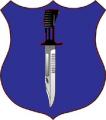Chapter IX
The Foundations
From page 187 – (paperback)
Thus many of those who had scrambled out of Burma without waiting to get to grips with the invader or who had been in the rear areas in 1943 had the most hair-raising stories of Japanese super-efficiency. Those of us who had really fought him believed that man for man our soldiers could beat him at his own jungle game and that in intelligence and skill we could excel and outwit him. …
… In August and September of 1942 Australian troops had at Milne Bay in New Guinea inflicted on the Japanese their first undoubted defeat on land. If the Australias in conditions very like ours had done it so could we. Some of us may forget that of all the allies it was Australian soldiers who first broke the spell of invincibility of the Japanese Army those of us who were in Burma have cause to remember.
But all this could not be convincingly put over by talking and education alone. It had to be demonstrated practically. This is what my predecessors had tried in
Arakan, but they had been, are amongst other things, too ambitious. A victory in a large-scale battle was, in our present state of training, organization, and confidence not to be attempted. We had first to get the feel through the army that it was a we who were hunting the Jap, not he us.
All commanders therefore directed their attention to patrolling. In jungle warfare this is the basis of success. It’s not only gives eyes to the side that excels at it, and blinds its opponent, but through it the soldier learns to move confidently in the element in which he works. Every forward unit, not only infantry, chose its best men, formed patrols, trained and practised them, and then sent them out on business. As it was to be expected, that the superior intelligence of our officers and men told. The trials came back to their regiments with stories of success, of how the Japanese had walked into the ambushes, and how they had watched the enemy place their observation posts a day off today in the same place, and then had pounced on them, how they had followed their patrols and caught them asleep. …
The stories lost nothing in the telling, and there was a are lack of competition for the next patrol. It went up with new men but under an experienced leader, and came back with more tails of success. Even if it returned with little to report, it had stalked its quarry without finding him, and that is one way to whet a hunter’s appetite. By the end of November our forward troops had gone a long way towards getting that individual feeling of superiority and that first essential in the fighting man - the desire to close with his enemy. …
… Having developed the confidence of the individual man in his superiority over the enemy, we have now to extend that to the corporate confidence of the units and formations in themselves. This was done in a series of carefully planned minor offensive operations, carried out as the weather improved, against enemy advanced detachments. These were carefully staged, ably led, and as I was always careful to ensure in greatly preponderating strength. We attacked Japanese company positions with brigades fully supported by artillery and aircraft, platoon posts by battalions. Once when I was studying the plan for an operation of this kind submitted by the local commander, a visiting the staff officer of high rank said, “Isn’t that using a steam hammer to crack a walnut?” “Well,” I answered, “if you happen to have a steam hammer handy and you don’t mind if there’s nothing left of the walnut, it’s not a bad way to crack it.” Besides, we could not at this stage risk even small failures. We had very few, and the individual superiority built up by successful patrolling grew into a feeling of superiority within units and formations. We were then ready to undertake larger operations. We had laid the first of our intellectual foundations of morale; everyone knew we could defeat the Japanese, our object was attainable.











 )
) 

Bookmarks